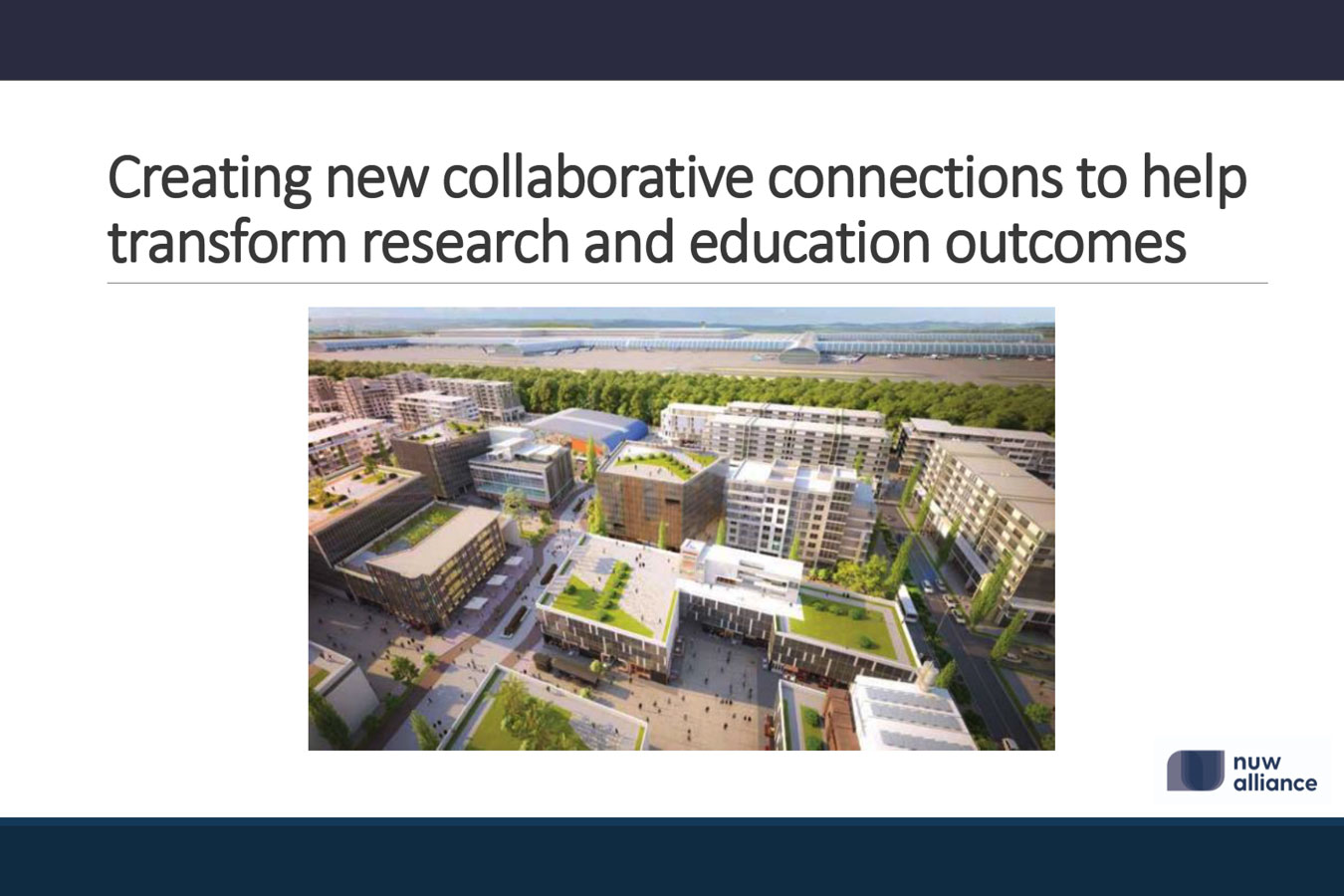Collaborative industry partnerships and innovative teaching environments influence precinct design in tertiary education.
It was American writer and journalist, Shelby Foote, who once said: “A university is just a group of buildings gathered around a library.” But Foote wasn’t at the 6th annual QPC Future Campus Development Conference in Sydney at the end of 2019, nor was he listening to discussions regarding enhanced campus vibrancy through co-location and consolidation and the rise of precinct-based campus design.
Chow:Hill Hamilton/Kirikiriroa director Jane Hill was and sees this push towards precinct thinking over buildings in isolation as an inspiring and encouraging trend for tertiary design in the coming decade.
“It was evident there is a strong departure from viewing universities as a series of distinct faculties and a move towards replanning campuses as a series of highly blended precincts, allowing them to enhance opportunity for innovation and foster real-world collaborative learning and working environments,” says Jane.
Future-Ready
A number of factors are positively contributing to the growing trend of precinct design within the tertiary education sector. The first of these is the recognition by universities of the practical need to consolidate and streamline the scale of their campuses.
“The conference discussions highlighted the financial challenges faced by universities in both Australia and New Zealand as a result of growing global competition and fluctuating student numbers. To address these challenges, they’re seeking smart, future-ready strategies to operate more sustainably and ensure the quality of the learning experiences they deliver,” Jane says. “The smart consolidation, clustering and co-location of activities on campuses presents an opportunity to use existing facilities more efficiently. It will also offer opportunity for enhanced connectivity with cities with a growing number of Australian universities establishing symbiotic relationships with neighbouring infrastructure, blurring the boundaries of the university and establishing a richer connection with the community.”
Active Collaboration
The vision for the consolidated university campus is akin to that of a vibrant urban city precinct. Amenity-rich, it offers 24/7 activity and supports a more holistic and desirable student experience through smart, compact and layered design. Statistics discussed at the IQPC Future Campus Development Conference stated 16,000businesses in Australia have formal partnerships with a university, generating more than $10 billion a year in revenue. “Precinct design thinking offers organisations (both university and industry) the opportunity to really leverage on this collaborative potential,” says Jane. “Campus planning founded the design of smart learning networks and neighbourhoods, ultimately creating enhanced learning and research outcomes for less m² and less cost.”
Campus planning founded the design of smart learning networks and neighbourhoods, ultimately creating enhanced learning and research outcomes for less m2 and less cost
An Agile Model
There is no one size fits all or fixed model when it comes to precinct design. “The concept of campus precincts opens up considerable possibility,” says Jane. “A precinct can be applied across a range of different scales. For example, an individual building can be designed as a precinct in the same way as the wider campus can be. There are also the discussions around what defines a precinct…what provides the catalyst? For example, they might be designed and developed around particular activities, amenities, or accommodation and equally can begin to explore the role of the campus in the wider city context. What tends to be more established is recognising the precinct as the sum of a diverse variety of parts - the opposite of the more silo’d approach that tends to lead faculty-based campus planning.” “Precinct thinking is about more than just creating singular buildings, which can become functionally obsolete very quickly. It’s about connecting the dots between urban campus planning and the planning for innovation, knowledge and expertise. For students, it’s about creating a more vibrant campus where student accommodation is mixed with social hubs which are mixed with learning centres,” she says.

Planning for Access and Equity
The car-free campus was another hot topic of the conference, a campus precinct carefully planned and co-located to incorporate the right infrastructure and transport links for long-term sustainability. “Underpinned by a combination of environmental and social sustainability, the concept of equity of access was a clear focus for university groups at the conference,” says Jane. “An awareness that not everyone drives and that accessibility to the university campus needs to be made easy for those walking, biking or scooting. Universities are thinking more widely in terms of the experiences they’re shaping for students, the diversity of their student group and the richness of those experiences being offered.”
A Learning Network
The shift towards precinct-based thinking brings new and exciting challenges for campus design, combining urban design best practice with a strong understanding of the relationships between space and andragogy. “The ‘ideal’ precinct campus is one that offers a network of holistic environments, that shape and enrich a user’s engagement and experience of the wider campus,” says Jane. “And it’s the engagement that becomes so critical. Effective precinct design ensures flow and connectivity across the campus. There is a reason why one environment or amenity is next to another within a precinct. It’s not just about effective utilisation of space, it’s about encouraging connections, sparking insights and deepening understanding – that’s the potential of great precinct design.”
The IQPC Future Campus Development Conference was held in Sydney from 31 October – 1 November. The focus of the conference was on strategic campus master planning with a focus on sustainable outcomes, collaborative partnerships and innovative teaching and learning environments.

Chow:Hill Architects
February 17, 2020


.png)